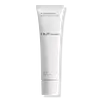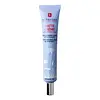What's inside
What's inside
 Key Ingredients
Key Ingredients

 Benefits
Benefits

 Concerns
Concerns

 Ingredients Side-by-side
Ingredients Side-by-side

Water
Skin ConditioningSodium Acrylates Crosspolymer-2
AbsorbentGlycerin
HumectantButylene Glycol
HumectantDipropylene Glycol
Humectant1,2-Hexanediol
Skin ConditioningC12-14 Pareth-12
EmulsifyingCaprylyl Glycol
EmollientEctoin
Skin ConditioningCarbomer
Emulsion StabilisingTromethamine
BufferingEthylhexylglycerin
Skin ConditioningMeteorite Powder
Skin ConditioningSodium Hyaluronate
HumectantCitrus Limon Fruit Extract
MaskingPseudanabaena Galeata Extract
Skin ConditioningCI 19140
Cosmetic ColorantCI 42090
Cosmetic ColorantWater, Sodium Acrylates Crosspolymer-2, Glycerin, Butylene Glycol, Dipropylene Glycol, 1,2-Hexanediol, C12-14 Pareth-12, Caprylyl Glycol, Ectoin, Carbomer, Tromethamine, Ethylhexylglycerin, Meteorite Powder, Sodium Hyaluronate, Citrus Limon Fruit Extract, Pseudanabaena Galeata Extract, CI 19140, CI 42090
Cyclomethicone
EmollientDimethicone
EmollientWater
Skin ConditioningVinyl Dimethicone/Methicone Silsesquioxane Crosspolymer
Polymethyl Methacrylate
Dicaprylyl Carbonate
EmollientTrihydroxystearin
Skin ConditioningSilica
AbrasiveDimethicone/Vinyl Dimethicone Crosspolymer
Skin ConditioningPolymethylsilsesquioxane
Isononyl Isononanoate
EmollientTrisiloxane
Skin ConditioningPEG-10 Dimethicone
Skin ConditioningAlcohol
AntimicrobialCetyl PEG/PPG-10/1 Dimethicone
EmulsifyingButylene Glycol
HumectantBis-PEG-18 Methyl Ether Dimethyl Silane
EmollientNymphaea Alba Flower Extract
Skin ConditioningPolysilicone-11
Dimethicone Crosspolymer
Emulsion StabilisingIsoceteth-10
EmulsifyingDisodium EDTA
Mica
Cosmetic ColorantEthylhexylglycerin
Skin ConditioningPentaerythrityl Tetra-Di-T-Butyl Hydroxyhydrocinnamate
AntioxidantTocopherol
AntioxidantPhenoxyethanol
PreservativeParfum
MaskingHexyl Cinnamal
PerfumingAlpha-Isomethyl Ionone
PerfumingLinalool
PerfumingCitronellol
PerfumingGeraniol
PerfumingEugenol
PerfumingLimonene
PerfumingCinnamyl Alcohol
PerfumingCI 77891
Cosmetic ColorantCI 77510
Cosmetic ColorantCyclomethicone, Dimethicone, Water, Vinyl Dimethicone/Methicone Silsesquioxane Crosspolymer, Polymethyl Methacrylate, Dicaprylyl Carbonate, Trihydroxystearin, Silica, Dimethicone/Vinyl Dimethicone Crosspolymer, Polymethylsilsesquioxane, Isononyl Isononanoate, Trisiloxane, PEG-10 Dimethicone, Alcohol, Cetyl PEG/PPG-10/1 Dimethicone, Butylene Glycol, Bis-PEG-18 Methyl Ether Dimethyl Silane, Nymphaea Alba Flower Extract, Polysilicone-11, Dimethicone Crosspolymer, Isoceteth-10, Disodium EDTA, Mica, Ethylhexylglycerin, Pentaerythrityl Tetra-Di-T-Butyl Hydroxyhydrocinnamate, Tocopherol, Phenoxyethanol, Parfum, Hexyl Cinnamal, Alpha-Isomethyl Ionone, Linalool, Citronellol, Geraniol, Eugenol, Limonene, Cinnamyl Alcohol, CI 77891, CI 77510
 Reviews
Reviews

Ingredients Explained
These ingredients are found in both products.
Ingredients higher up in an ingredient list are typically present in a larger amount.
Butylene Glycol (or BG) is used within cosmetic products for a few different reasons:
Overall, Butylene Glycol is a safe and well-rounded ingredient that works well with other ingredients.
Though this ingredient works well with most skin types, some people with sensitive skin may experience a reaction such as allergic rashes, closed comedones, or itchiness.
Learn more about Butylene GlycolEthylhexylglycerin (we can't pronounce this either) is commonly used as a preservative and skin softener. It is derived from glyceryl.
You might see Ethylhexylglycerin often paired with other preservatives such as phenoxyethanol. Ethylhexylglycerin has been found to increase the effectiveness of these other preservatives.
Water. It's the most common cosmetic ingredient of all. You'll usually see it at the top of ingredient lists, meaning that it makes up the largest part of the product.
So why is it so popular? Water most often acts as a solvent - this means that it helps dissolve other ingredients into the formulation.
You'll also recognize water as that liquid we all need to stay alive. If you see this, drink a glass of water. Stay hydrated!
Learn more about Water